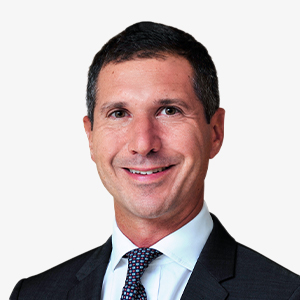Corporate Hybrid Bond Fund
UCITS Fund | Fixed Income
Corporate Hybrid Bond Fund
SFDR Classification | Article 8
Why Invest
Attractive Income and High Yield-Like Return from Well-Known Issuers
Corporate hybrid bonds generally offer significantly higher yields than senior bonds of the same issuers
Deep Fundamental Research
Approach combines a relative value-focused framework with intensive fundamental analysis to identify attractive, high-conviction investment opportunities from globally recognised issuers
Experienced and Well-Resourced Team
Lead portfolio managers have vast experience in Euro credit investing and are supported by the firm’s globally integrated fixed income platform of 190+ investment professionals
This is a marketing communication in respect of the Neuberger Berman Corporate Hybrid Bond Fund. Please refer to the fund prospectus and offering documents, including the Key Information Document (“KID”) or Key Investor Information Document (“KIID”) as applicable, before making any final investment decisions. Investors should note that by making an investment they will own shares in the fund, and not the underlying assets.
The fund complies with the Sustainable Finance Disclosure Regulation (the “SFDR”) and is classified as an Article 8 SFDR fund. Neuberger Berman believes that Environmental, Social and Governance (“ESG”) factors, like any other factor, should be incorporated in a manner appropriate for the specific asset class, investment objective and style of each investment strategy.
Key Risks
Market Risk: The risk of a change in the value of a position as a result of underlying market factors, including among other things, the overall performance of companies and the market perception of the global economy.
Liquidity Risk: The risk that the fund may be unable to sell an investment readily at its fair market value. In extreme market conditions this can affect the fund’s ability to meet redemption requests upon demand.
Credit Risk: The risk that bond issuers may fail to meet their interest repayments, or repay debt, resulting in temporary or permanent losses to the fund.
Interest Rate Risk: The risk of interest rate movements affecting the value of fixed-rate bonds.
Concentration Risk: The fund's investments may be concentrated in a small number of investments and its performance may therefore be more variable than the performance of a more diversified fund.
Counterparty Risk: The risk that a counterparty will not fulfil its payment obligation for a trade, contract or other transaction, on the due date.
Operational Risk: The risk of direct or indirect loss resulting from inadequate or failed processes, people and systems including those relating to the safekeeping of assets or from external events.
Derivatives Risk: The fund is permitted to use certain types of financial derivative instruments (including certain complex instruments). This may increase the fund’s leverage significantly which may cause large variations in the value of your share. Investors should note that the fund may achieve its investment objective by investing principally in Financial Derivative Instruments (FDI). There are certain investment risks that apply in relation to the use of FDI. The fund’s use of FDI can involve significant risks of loss.
Hybrid Securities Risk: Hybrid securities are highly structured instruments that combine both equity and fixed income features. They generally carry a higher levels of credit risk as compared to less structured bonds. These include greater risk of coupon deferral, extension of the maturity date by the issuer as well as reinvestment risk due to early redemption. Investors should refer to the risk sections of the prospectus and supplements for further details.
Currency Risk: Investors who subscribe in a currency other than the base currency of the fund are exposed to currency risk. Fluctuations in exchange rates may affect the return on investment. Where past performance is shown it is based on the share class to which this webpage relates. If the currency of this share class is different from your local currency, then you should be aware that due to exchange rate fluctuations the performance shown may increase or decrease if converted into your local currency.
For full information on the risks please refer to the fund prospectus and offering documents, including the KID or KIID, as applicable.
Morningstar Rating
For each fund with at least a three-year history, Morningstar calculates a Morningstar Rating based on a Morningstar Risk-Adjusted Return measure that accounts for variation in a fund’s monthly performance (including the effects of sales charges, loads, and redemption fees), placing more emphasis on downward variations and rewarding consistent performance. The top 10% of funds in each category receive five stars, the next 22.5% receive four stars, the next 35% receive three stars, the next 22.5% receive two stars and the bottom 10% receive one star. (Each share class is counted as a fraction of one fund within this scale and rated separately, which may cause slight variations in the distribution percentages.) The Overall Morningstar Rating for a retail mutual fund is derived from a weighted average of the performance figures associated with its three-, five- and ten-year (if applicable) Morningstar Rating metrics. Ratings are ©2023 Morningstar, Inc. All Rights Reserved. The information contained herein: (1) is proprietary to Morningstar and/or its content providers; (2) may not be copied or distributed; and (3) is not warranted to be accurate, complete or timely. Neither Morningstar nor its content providers are responsible for any damages or losses arising from any use of this information.
The ongoing charge figure (incl. management fee) is based on the annual expenses for the period ending 31 December 2023.
The fund’s benchmark name shown here may be abbreviated. Please refer to the supplement for the full benchmark name.
Linus Claesson, CFA
David M. Brown, CFA
Antonio Serpico
Sergejs Prala, CFA, FRM
Sergejs Prala, CFA, Senior Vice President, is a Portfolio Manager on the Global Investment Grade team, based in Paris, France. Sergejs is responsible for managing Euro and Global IG Credit, Corporate Hybrids and Short-Dated Bond portfolios. Prior to joining the firm in 2018, Sergejs was working at BNP Paribas Asset Management as portfolio manager for European fixed income strategies. He began his career in 2006 as a credit risk analyst at Privatbank. Sergejs holds a BSc in Economics from the University of Latvia and has graduated with MSc in Business Administration from Rotterdam School of Management, Erasmus University. Sergejs is a CFA charterholder.




